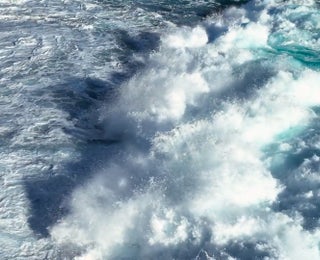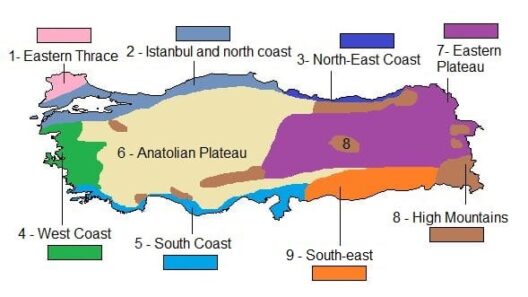Ocean climate is a fundamental aspect of our planet’s environmental dynamics, functioning as the largest weather influence on Earth. It encapsulates the intricate interactions between marine systems, atmospheric conditions, and terrestrial ecosystems. The ocean not only harbors an immense variety of life but also plays a pivotal role in regulating climate and weather patterns on a global scale.
Understanding ocean climate necessitates an examination of several key elements: sea surface temperature, salinity, ocean currents, and the influence of the ocean on atmospheric phenomena. Each of these factors interweaves to create the complex tapestry of climate systems that govern our planet.
At the forefront of ocean climate is sea surface temperature (SST). SST is critical because it directly affects heat exchange between the ocean and atmosphere. This process is instrumental in driving weather patterns, as warmer waters tend to evaporate more moisture, leading to increased precipitation in adjacent land areas. Conversely, cooler waters can lead to drier conditions. Variations in SST can also contribute to significant climatological events, such as El Niño and La Niña, which alter global weather patterns and can have profound impacts on agriculture, water resources, and biodiversity.
Salinity, the concentration of dissolved salts in seawater, further influences ocean climate. Changes in salinity can affect water density, which in turn impacts ocean circulation. These currents are paramount in distributing heat throughout the ocean. The “Great Ocean Conveyor,” for instance, is a continuous movement of ocean water that transports warm, saline water from the tropics to the poles, while cold, dense water sinks and returns to the equator. This thermohaline circulation plays a crucial role in regulating the global climate by maintaining temperature equilibrium.
Ocean currents also serve as thoroughfares for heat transfer. The Gulf Stream, a powerful current in the North Atlantic, carries warm water from the Caribbean to the eastern United States and Western Europe. This not only moderates temperatures in these regions but also influences weather phenomena such as storms and hurricanes. Understanding the behavior of these currents is essential for predicting climate anomalies and preparing for extreme weather events.
One cannot overlook the significant impact of ocean climate on atmospheric conditions. The ocean acts as a carbon sink, absorbing approximately 30% of the carbon dioxide (CO2) emissions generated by human activities. This process is vital in mitigating the effects of climate change, yet it also leads to ocean acidification, which poses a threat to marine life, particularly organisms with calcium carbonate structures like coral reefs and shellfish. The decline of these marine ecosystems not only affects biodiversity but also disrupts essential services that coastal communities rely upon.
Furthermore, phytoplankton, the microscopic plants residing in the ocean, play a crucial role in the climate system. They perform photosynthesis, capturing CO2 and releasing oxygen. Acting as a foundation of the marine food web, phytoplankton contribute significantly to carbon cycling and energy transfer within the ocean. The health of these microorganisms is indicative of overall ocean health and is influenced by temperature, salinity, and nutrient availability.
As we delve deeper into the interplay between ocean climate and extreme weather, it’s vital to recognize how the increasing temperatures of the ocean exacerbate weather patterns. Warmer ocean surfaces are linked to more intense hurricanes, leading to greater destruction when they make landfall. The 2017 hurricane season provides a stark illustration; numerous storms formed and intensified rapidly, influenced by elevated sea surface temperatures.
Moreover, rising ocean temperatures contribute to sea-level rise through thermal expansion and the melting of Polar Regions. Coastal and island nations are facing existential threats from inundation, saltwater intrusion, and increased storm surges. Adaptation strategies are becoming paramount as rising sea levels render traditional protective measures insufficient.
In addition, the ocean’s role in climate systems has far-reaching socio-economic implications. Fisheries depend on stable climate conditions for resource sustainability. However, as ocean temperatures rise, species migrate toward cooler waters, threatening the livelihoods of communities that rely on fishing. Adjustments to fishing quotas and seasonal patterns are essential to mitigate the impacts of these shifts.
Climate models indicate that continued greenhouse gas emissions will further escalate changes in ocean climate. The potential feedback mechanisms, such as the release of methane from thawing permafrost, could exacerbate warming and lead to unpredictable outcomes. Thus, it becomes imperative to implement holistic climate policies that address emissions reduction while considering the intricate relationships between ocean health and climate stability.
In conclusion, ocean climate constitutes an integral element of the Earth’s climate system, influencing weather patterns, regulating temperature, and supporting biodiversity. With the ocean absorbing vast amounts of carbon and harboring life-sustaining ecosystems, understanding its dynamics is crucial for mitigating climate change impacts and preserving environmental integrity. Ongoing research and proactive engagement at both local and international levels are necessary to protect oceans and, consequently, the climate conditions that support life on Earth.








